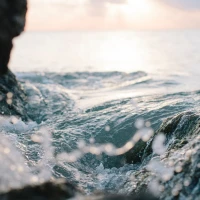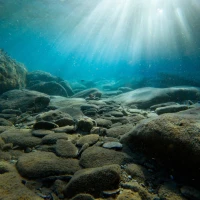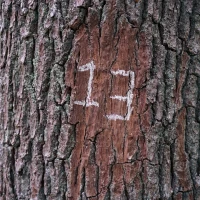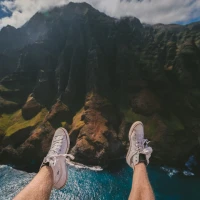Free diving is an exhilarating and challenging sport that allows individuals to explore the depths of the ocean without the reliance on breathing apparatus. It requires a unique set of skills, physical fitness, and mental discipline. In this ultimate guide to free diving, we will delve into the various aspects of this captivating sport, including equipment, techniques, safety measures, and the best free diving locations around the world. Whether you are a beginner or an experienced free diver, this comprehensive guide will provide valuable insights to help you push your limits in the deep blue.
The Fascination of Free Diving
What is Free Diving?
Free diving, also known as breath-hold diving or skin diving, is a form of underwater diving that relies on holding one’s breath rather than using breathing apparatus. It has a long history, dating back thousands of years, as an ancient method of fishing and gathering food. Today, free diving has evolved into a popular recreational and competitive sport.
The Allure of Free Diving
Free diving offers a unique and intimate experience with the underwater world. Unlike scuba diving, where the noise of breathing apparatus can disturb marine life, free diving allows for a more natural and unobtrusive encounter with oceanic creatures jewish calendar converter. The tranquility and freedom of movement that comes with free diving are unmatched, attracting individuals who seek a deeper connection with the ocean and a sense of personal challenge and accomplishment.
Equipment for Free Diving
To engage in free diving, you will need a few essential pieces of equipment. While the simplicity of free diving is one of its appeals, having the right gear can significantly enhance comfort, safety, and performance.
Dive Mask
A high-quality dive mask is a crucial piece of equipment that provides a clear field of vision underwater. It should fit snugly, ensuring a watertight seal and allowing for equalizing pressure during descent. Look for a mask with a low-volume design to minimize the air space between your face and the lens, resulting in less effort required for equalization.
Snorkel
A snorkel allows you to breathe while floating face down on the surface of the water, conserving energy and minimizing the number of times you need to lift your head to breathe. Opt for a snorkel with a comfortable mouthpiece that can be easily cleared of water.
Fins
Fins are essential for efficient propulsion and maneuverability underwater. They should be lightweight, flexible, and have a comfortable fit. Longer fins are generally preferred for free diving as they provide greater thrust with less effort.
Wetsuit
A wetsuit helps maintain body heat and provides protection against minor scrapes and stings. The thickness of the wetsuit will depend on the water temperature. For colder waters, opt for a thicker wetsuit or consider using a wetsuit with a built-in hood or separate neoprene hood.
Weight Belt
A weight belt is used to counteract the buoyancy of the wetsuit and equipment, allowing you to achieve neutral buoyancy while diving. The amount of weight needed will vary depending on your body composition, the thickness of your wetsuit, and the depth of your dive.
Techniques of Free Diving
Breathing Techniques
Proper breathing techniques are essential for free diving as they help optimize oxygen intake and extend breath-hold capabilities. The following breathing exercises can be incorporated into your free diving training routine:
- Diaphragmatic Breathing: Diaphragmatic breathing involves deep inhalation and exhalation using the diaphragm muscle. This technique allows for increased oxygen intake and efficient gas exchange.
- Box Breathing: Box breathing is a technique that involves inhaling, holding the breath, exhaling, and again holding the breath, each for a count of four seconds. This technique helps to regulate breathing and reduce the heart rate.
- CO2 Tolerance Training: CO2 tolerance training involves breath-holding exercises to build tolerance to the buildup of carbon dioxide in the body. This is important as the urge to breathe is triggered more by the buildup of carbon dioxide rather than the lack of oxygen.
Equalization Techniques
Equalization is the process of equalizing the pressure in the middle ear, sinuses, and lungs during descent. Failure to equalize properly can result in discomfort, pain, and potential injury. The most commonly used equalization techniques include:
- Valsalva Maneuver: The Valsalva maneuver involves closing the nostrils and attempting to exhale against a closed airway. This technique increases pressure in the middle ear, allowing for equalization.
- Frenzel Maneuver: The Frenzel maneuver involves closing the nostrils and constricting the throat muscles while making a swallowing motion. This technique uses the tongue and soft palate to equalize the pressure.
Freediving Disciplines
Free diving encompasses various disciplines, each with its own set of rules and challenges. The most popular disciplines include:
- Constant Weight: In this discipline, free divers descend and ascend using fins or a monofin while holding their breath. They are not allowed to use any form of propulsion aids.
- Free Immersion: Free immersion involves pulling oneself down and back to the surface using a rope or line. No fins or propulsion aids are used in this discipline.
- Variable Weight: Variable weight allows free divers to use a weighted sled or other forms of propulsion to descend. They must then return to the surface using their own power.
- No-Limits: No-limits is the deepest and most extreme discipline in free diving. Free divers use a weighted sled to descend and then return to the surface using a lifting mechanism, such as a balloon or inflatable bag.
Safety Measures in Free Diving
Free diving can be a physically demanding and potentially dangerous activity. It is essential to prioritize safety and take necessary precautions to avoid accidents and injuries. Here are some safety measures to consider:
Never Dive Alone
Always dive with a buddy and establish clear communication signals. Having a buddy ensures that there is someone to assist in case of an emergency or blackout. A team of experienced free divers can provide additional safety and support.
Know Your Limits
Listen to your body and recognize your limits. Pushing beyond your capabilities can lead to hypoxic blackout, shallow water blackout, or other serious health consequences. Gradually increase your depth and breath-hold times as you gain experience and improve your skills.
Stay Hydrated
Proper hydration is essential for overall body function and can help improve breath-hold capabilities. Drink sufficient water before, during, and after your dives to prevent dehydration.
Be Mindful of Equalization
Practice proper equalization techniques and do not force equalization if you experience discomfort or pain. Failure to equalize properly can lead to barotrauma and other ear-related injuries.
Monitor Depth and Dive Time
Use a depth gauge and dive watch to monitor your depth and dive time. Keeping track of your depth and dive time allows you to plan your dives accordingly and helps prevent shallow water blackout.
Respect Marine Life and the Environment
When free diving, always respect marine life and the environment. Do not touch or disturb marine creatures, and refrain from removing or damaging any coral or other marine life. Be aware of local regulations and dive responsibly.
Free Diving Locations
The world is home to fascinating free diving locations that offer diverse marine life, crystal-clear waters, and awe-inspiring underwater landscapes. Here are some of the top destinations for free diving:
1. The Blue Hole, Belize
The Blue Hole in Belize is a renowned free diving site formed by a collapsed underwater sinkhole. Its clear blue waters and abundant marine life make it a popular destination for free divers. The Blue Hole offers the opportunity to explore fascinating stalactites and swim alongside sharks and other oceanic species.
2. Dean’s Blue Hole, Bahamas
Dean’s Blue Hole in the Bahamas is the world’s deepest known saltwater blue hole, reaching a depth of over 650 feet. The site hosts international free diving competitions and provides an ideal location for experienced free divers looking to test their limits.
3. Cenotes, Mexico
Mexico’s Yucatan Peninsula is famous for its cenotes, natural sinkholes filled with crystal-clear freshwater. Cenotes offer a unique free diving experience, with stunning limestone formations, underwater caves, and a diverse ecosystem. The Great Mayan Aquifer boasts over 6,000 cenotes, making it a paradise for free divers.
4. Kona Coast, Hawaii
The Kona Coast in Hawaii is known for its calm and clear waters, abundant marine life, and stunning coral reefs. Free divers have the opportunity to encounter dolphins, manta rays, and a variety of tropical fish while exploring underwater lava tubes and submerged caves.
Conclusion
Free diving provides a gateway to explore the deep blue in a way that scuba diving cannot replicate. With the right equipment, proper techniques, and adherence to safety measures, free diving can be an incredible and rewarding adventure. From the tranquility of breath-holding to the mesmerizing marine life encountered, free diving offers a unique connection to the underwater world. Whether you are a seasoned free diver or looking to embark on your first underwater exploration, utilize this ultimate guide to push your limits and embrace the wonders of free diving.










